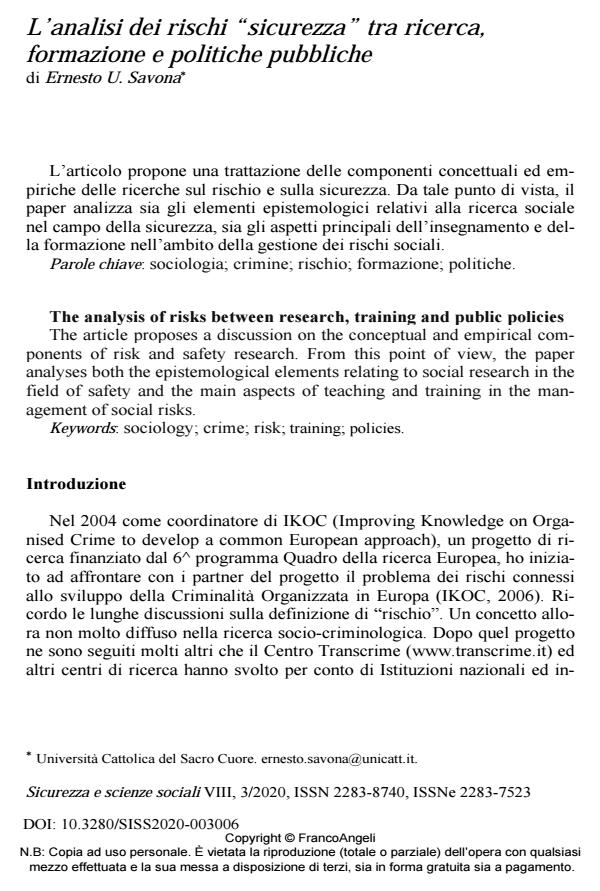The analysis of risks between research, training and public policies
Journal title SICUREZZA E SCIENZE SOCIALI
Author/s Ernesto U. Savona
Publishing Year 2021 Issue 2020/3
Language Italian Pages 13 P. 58-70 File size 185 KB
DOI 10.3280/SISS2020-003006
DOI is like a bar code for intellectual property: to have more infomation
click here
Below, you can see the article first page
If you want to buy this article in PDF format, you can do it, following the instructions to buy download credits

FrancoAngeli is member of Publishers International Linking Association, Inc (PILA), a not-for-profit association which run the CrossRef service enabling links to and from online scholarly content.
The article proposes a discussion on the conceptual and empirical components of risk and safety research. From this point of view, the paper analyses both the epistemological elements relating to social re-search in the field of safety and the main aspects of teaching and train-ing in the management of social risks.
Keywords: Sociology; crime; risk; training; policies.
Ernesto U. Savona, L’analisi dei rischi "sicurezza" tra ricerca, formazione e politiche pubbliche in "SICUREZZA E SCIENZE SOCIALI" 3/2020, pp 58-70, DOI: 10.3280/SISS2020-003006